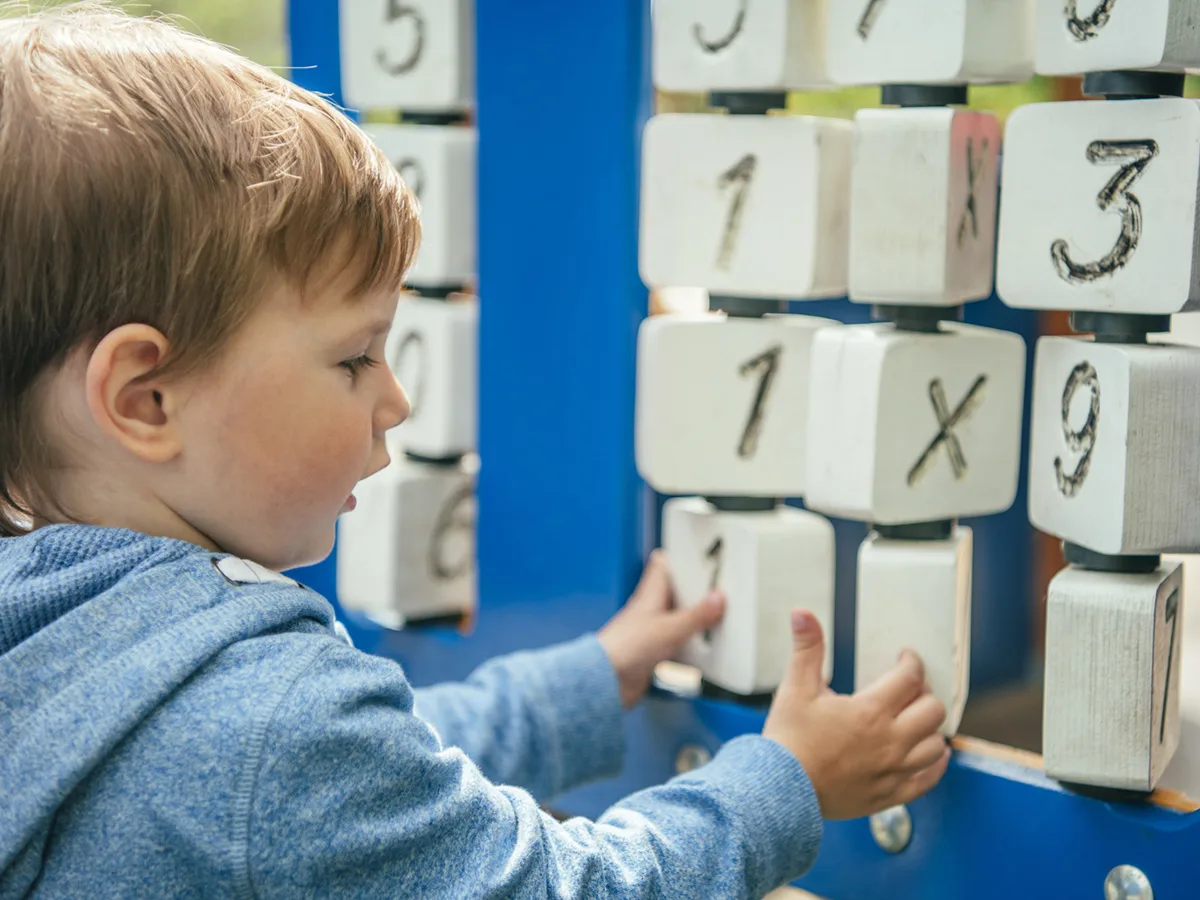Math skills at different ages

Kids start learning math the moment they start exploring the world. Each skill — from identifying shapes to counting to finding patterns — builds on what they already know.
There are certain math milestones most kids hit at roughly the same age. But keep in mind that kids develop math skills at different rates. If kids don’t yet have all the skills listed for their age group, that’s OK.
Here’s how math skills typically develop as kids get older.
Babies (ages 0–12 months)
Begin to predict the sequence of events (like running water means bath time)
Start to understand basic cause and effect (shaking a rattle makes noise)
Begin to classify things in simple ways (some toys make noise and others don’t)
Start to understand relative size (baby is small, parents are big)
Begin to understand words that describe quantities (more, bigger, enough)
Toddlers (ages 1–2 years)
Understand that numbers mean “how many” (using fingers to show how many years old they are)
Begin reciting numbers, but may skip some of them
Understand words that compare or measure things (under, behind, faster)
Match basic shapes (triangle to triangle, circle to circle)
Explore measurement by filling and emptying containers
Start seeing patterns in daily routines and in things like floor tiles
Preschoolers (ages 3–4 years)
Recognize shapes in the real world
Start sorting things by color, shape, size, or purpose
Compare and contrast using classifications like height, size, or gender
Count up to at least 20 and accurately point to and count items in a group
Understand that numerals stand for number names (5 stands for five)
Use spatial awareness to put puzzles together
Start predicting cause and effect (like what will happen if they drop a toy in a tub full of water)
Kindergartners (age 5 years)
Add by counting the fingers on one hand — 1, 2, 3, 4, 5 — and starting with 6 on the second hand
Identify the larger of two numbers and recognize numerals up to 20
Copy or draw symmetrical shapes
Start using very basic maps to find a “hidden treasure”
Begin to understand basic time concepts, like morning or days of the week
Follow multi-step directions that use words like first and next
Understand the meaning of words like unlikely or possible
First and second graders
Predict what comes next in a pattern and create own patterns
Know the difference between two- and three-dimensional shapes and name the basic ones (cubes, cones, cylinders)
Count to 100 by ones, twos, fives, and tens
Write and recognize the numerals 0 to 100, and the words for numbers from one to twenty
Do basic addition and subtraction up to 20
Read and create a simple bar graph
Recognize and know the value of coins
Third graders
Move from using hands-on methods to using paper and pencil to work out math problems
Work with money
Do addition and subtraction with regrouping (also known as borrowing)
Understand place value well enough to solve problems with decimal points
Know how to do multiplication and division, with help from fact families (collections of related math facts, like 3 × 4 = 12 and 4 × 3 = 12)
Create a number sentence or equation from a word problem
Fourth and fifth graders
Start applying math concepts to the real world (like cutting a recipe in half)
Practice using more than one way to solve problems
Write and compare fractions and decimals and put them in order on a number line
Compare numbers using > (greater than) and < (less than)
Start two- and three-digit multiplication (like 312 × 23)
Complete long division, with or without remainders
Estimate and round
Middle-schoolers
Begin basic algebra with one unknown number (like 2 + x = 10)
Use coordinates to locate points on a grid, also known as graphing ordered pairs
Work with fractions, percentages, and proportions
Work with lines, angles, types of triangles, and other basic geometric shapes
Use formulas to solve complicated problems and to find the area, perimeter, and volume of shapes
High-schoolers
Understand that numbers can be represented in many ways (fractions, decimals, bases, and variables)
Use numbers in real-life situations (like calculating a sale price or comparing student loans)
Begin to see how math ideas build on one another
Begin to understand that some math problems don’t have real-world solutions
Use mathematical language to convey thoughts and solutions
Use graphs, maps, or other representations to learn and convey information
Remember that kids develop at different paces. Some may gain some math skills later than other kids or have some that are advanced for their age.
If you're concerned about progress in math, find out why some kids have trouble with math, and next steps to take.

